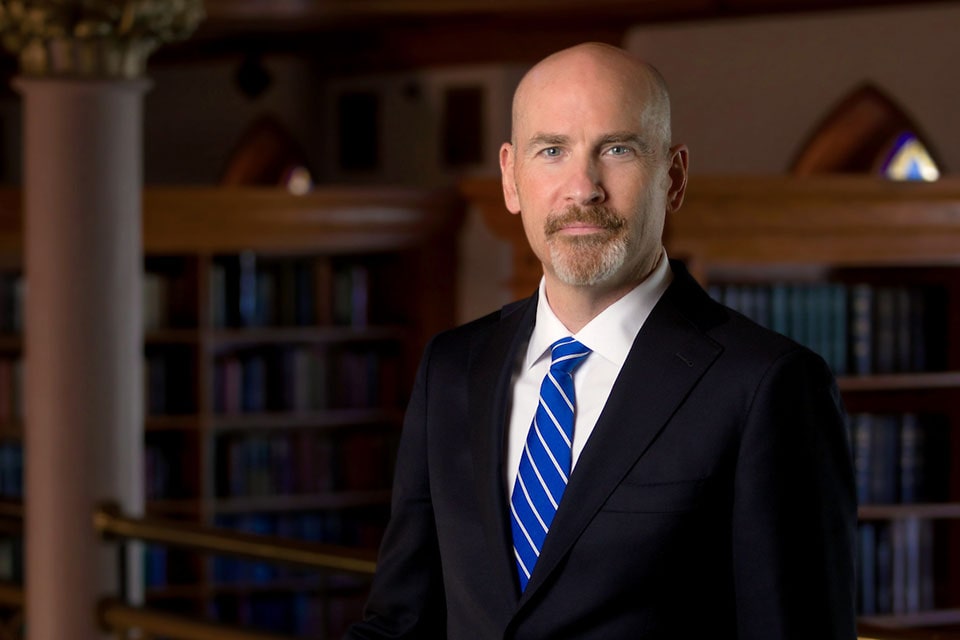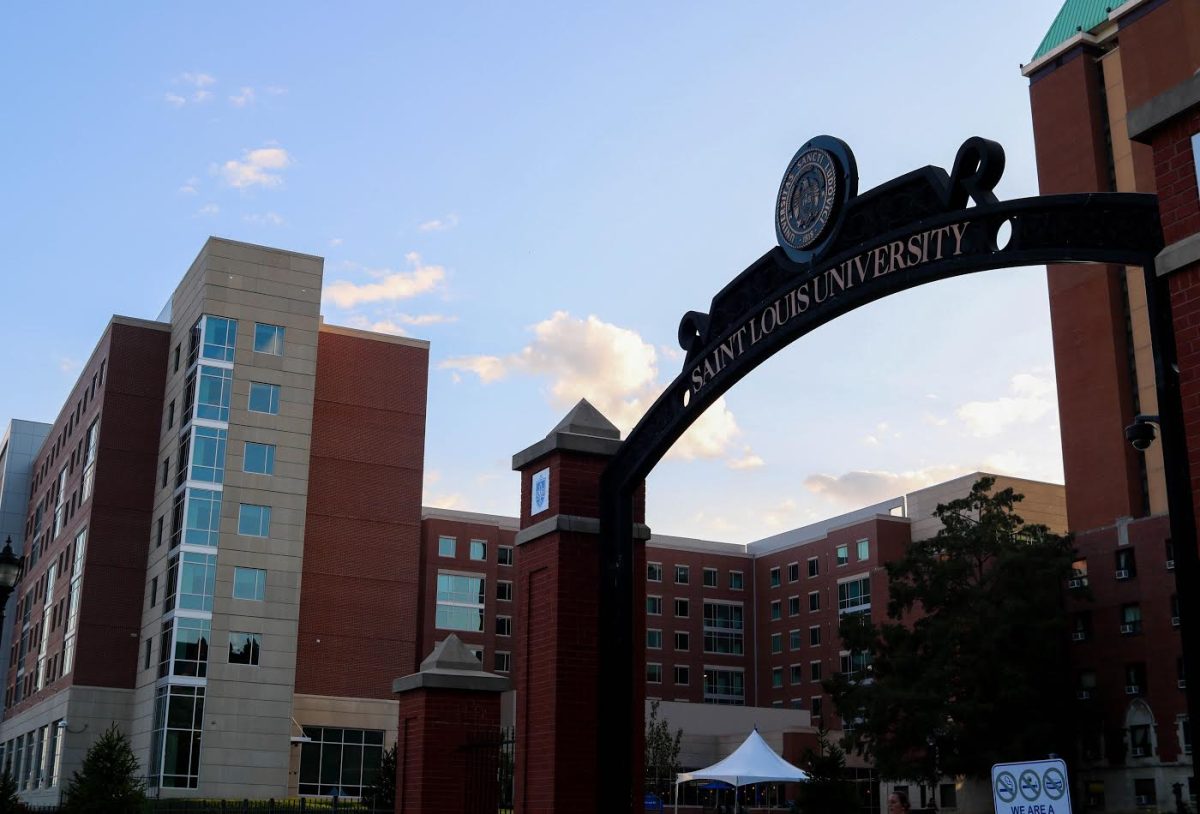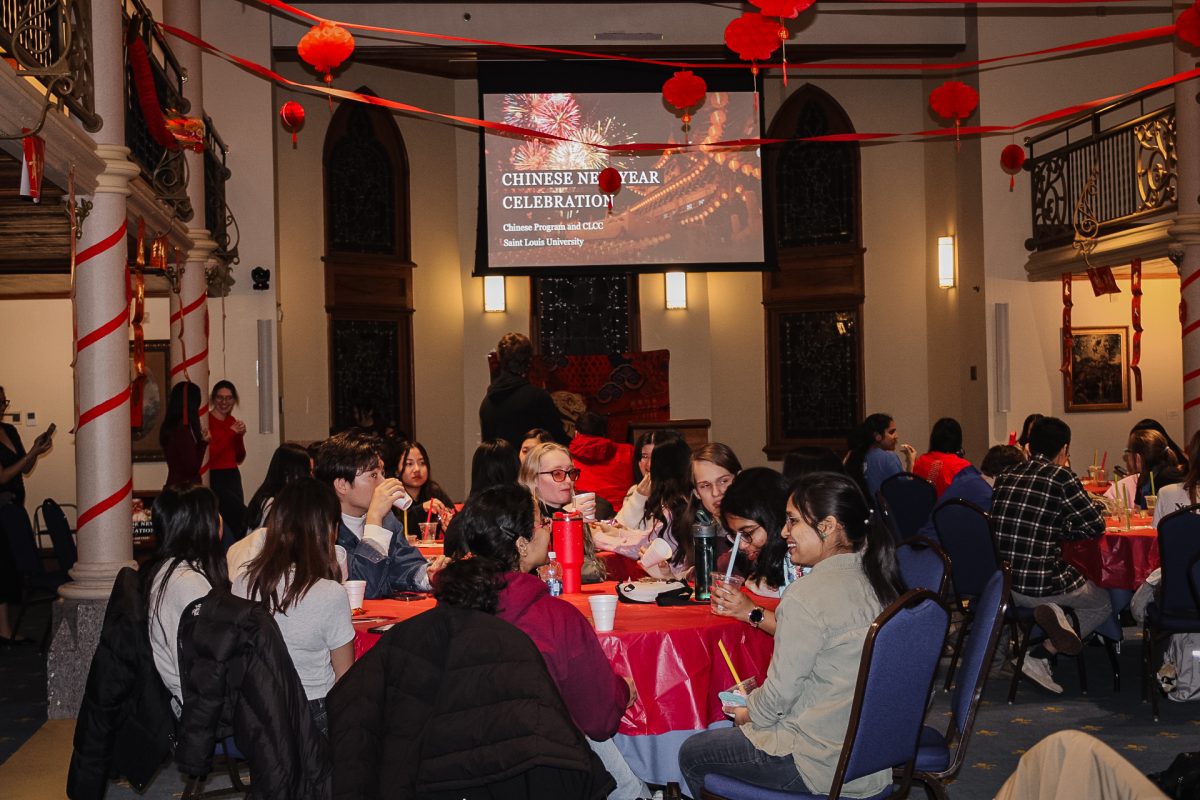This year the Biomedical Engineering Society, which annually names up to five undergraduate students as the recipients of an award, announced that two of its four awards would go to Saint Louis University students. Patricia Arauz, a senior, and Sarah Stabenfeldt, currently enrolled in the graduate program at Georgia Institute of Technology and concentrating in neural tissue engineering, were recipients.
“It’s given by the Biomedical Engineering Society; it’s a national organization. They give out undergraduate student design and research awards for an annual conference,” says Rebecca Willits, Ph.D., a faculty member of the Parks College of Engineering and Aviation. “(The students) had to put in a paper outlining their research in June.”
Stabenfeldt and Arauz, the first of any SLU students to win such a prestigious award, were notified a month ago.
Willits cites the BME program at SLU as “new,” since it was started in 1997, alluding to the high quality of the program in its early years. As far as future plans, Willits says that the department plans to “continue to have them participate in such contests.”
In describing the work of her students, Willits replied, “Tricia was looking at how to design a material that will help bone cells–osteoplasts–grow better.” She said that Stabenfeldt’s work looked at NGF, or nerve-growth factors, “trying to deliver [NGF] to nerve cells…the kinetics of delivery, how much and how fast.” Essentially, Stabenfeldt worked on “the regeneration of nerve cells.”
Arauz described the specific nature of her work by describing the background of problems with modern orthopedic implants: “Orthopedic implants only last 10 to 15 years.” She said she was looking to “coat the implant, to encourage bone growth.” She said that younger of individuals requiring orthopedic treatments, may typically require two to three replacements.
Arauz’s project, entitled “Effect of Hydrogel Physical Properties on Osteoblast Proliferation” investigated the polymer hydrogels, like contact lenses, that “swell in water but dry up…(containing) pores for cells to go through.”
Arauz, says her award is a big honor. “I never really expected to get it by any means,” she said. Arauz plans to apply to graduate schools now to obtain a doctorate degree and is currently in the application process.
She adds that she originally wanted to pursue a medical degree, but after realizing that research was her true calling, she made the decision her junior year to be an engineer.
In describing the curriculum, Arauz discussed the “senior projects class,” part of the strict curriculum that puts students in the lab. She sees this year’s awards as garnering more recognition for the University and helping obtain other grants. She adds that any scientific or research-related work, such as the creation of another research center, is good for an academic institution.
Stabenfeldt’s work explored the delivery of a “drug through a polymer… (and) the release of the drug over time.” She cited that severed nerves do not connect and that although injecting a drug may help, her studies looked into optimizing, making the release a “continuous” process within the peripheral nervous system.
Like Arauz, she feels honored to win the award, and credits much of her success to her professors and colleagues–“without them I would not have been able to complete as much.”
In particular, Stabenfeldt mentioned Dr. Willits: “Most if not all of my research work was under the guidance of Dr. Rebecca Willits. The entire faculty had an influence on my academic work.”
Much in the same way Arauz initially aspired to be a physician, Stabenfeldt took her desire to work in the medical field and combined it with her curiosity in math, and upon speaking with Cecil Thomas, Ph. D., decided that her niche lay in BME.
She cites that while the absence of a graduate BME program affords undergraduate students the opportunity to work with faculty directly, the inclusion of such a program would greatly benefit the University and the department.
“New faculty from diverse backgrounds will allow for a wider variety of courses to be offered,” Stabenfeldt said.
“The second thing, which is ranked not too far behind the first, is the addition of a graduate program. SLU is one of a few BME programs in the nation that only has an undergraduate level program,” she said.








